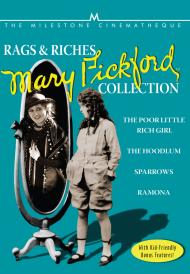Movie Review
The Musketeers of Pig Alley
One good turn deserves another.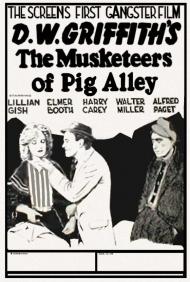
US Release Date: 10-31-1912
Directed by: D.W. Griffith
Starring▸▾
- Elmer Booth, as
- Snapper Kid, Chief of the Musketeers
- Lillian Gish, as
- The Little Lady
- Walter Miller, as
- The Musician
- Clara T. Bracy, as
- Mother of the Little Lady
- Alfred Paget, as
- Rival Gang Leader
- John T. Dillon, as
- Policeman
- Harry Carey, as
- Snapper's Sidekick
- Lionel Barrymore, as
- Friend of the Musician
- Donald Crisp, as
- Rival Gang Member
- Dorothy Gish as
- Frizzy-haired woman in street
![3.75 star[s] out of 4](http://www.threemoviebuffs.com/static/images/global/featured_gold_stars.png)
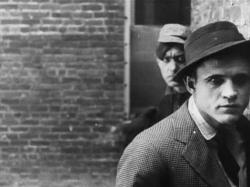
The very first gangster movie.
Among D.W. Griffith’s many accomplishments as a filmmaker is the invention of the gangster genre. The Musketeers of Pig Alley contains many of the classic elements of what would later be called the gangster picture. Set in the slums of Manhattan’s Lower East Side its youthful hero is a musician (Walter Miller). There is also a girl (Lillian Gish) and her ailing mother (Clara T. Bracy). Griffith regulars and future stars Lionel Barrymore, Donald Crisp and Gish sister Dorothy all have small roles.
The crowded, teeming streets are evocative of lower Manhattan. The sets include a tenement building apartment and stairway, an exterior and interior saloon and of course the titular alley. In one scene there is a lively party taking place in Pig Alley. Although this was made eight years before the start of the roaring twenties the gangsters are all familiar types.
One day the musician joyfully returns from a gig with his pocketbook full of cash, only to be mugged by several neighborhood tuffs, led by Snapper Kid, Chief of the Musketeers. Elmer Booth suggests a young James Cagney as he moves through the neighborhood with a cocky swagger. Cagney would have been a youth of thirteen when this movie came out, a product of these same mean streets.
The plot moves fast and furious in this seventeen minute movie. One day while the daughter is out the ailing mother has a heart attack and dies. The musician sets out to recover his stolen money and the grieving girl goes with a female friend to a party that is referred to in the subtitles as a Gangster’s Ball.
At the dance the girl gets caught in the middle between the Musketeers and a rival gang. They decide to take their beef outside. The movies’ most famous shot is when Griffith has his characters walk towards the camera as they slink along a wall in the alley, until they are in close-up, before passing by. Snapper Kid lingers for a brief moment sneering into the lens. The climax is a shootout between the two gangs in Pig Alley.
The Musketeers of Pig Alley is a great example of how innovative Griffith was. Notice how he uses the actions of his characters to suggest camera movement. He also understood that an audience could follow a storyline without needing every detail to be spelled out. This remains one of the seminal director’s best known shorts before he achieved immortality with The Birth of a Nation.
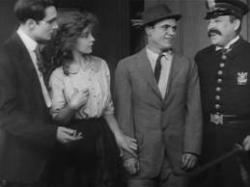
Walter Miller, Lillian Gish, Elmer Booth and John T. Dillon in The Musketeers of Pig Alley.
This movie is generally considered to be the first gangster film and it's easy to see why. Although we don't really see much organized crime and the Musketeers seem more like young toughs than they do mobsters, you can see in them the same things that have been repeated in countless gangster films from James Cagney to Good Fellas. In fact, Martin Scoresese has listed this film as an influence.
Griffith does make good use of focus, editing and camera set-ups, but William Elmer Booth is the best thing this short has going for it. As Snapper, the leader of the Musketeers, he's cocky, tough, but with a little bit of charm. Cagney's persona definitely has echoes of Booth's from this film. He's the villain of the film, but unlike so many villains in early silent films, he's not painted entirely black and he does absolutely no mustache twirling. He's willing to mug someone to get money, but when he's rejected by the girl at the end of the film, he doesn't attack her. He just tilts back his hat in astonishment and smiles wonderingly that she would pick someone else but him. And this being many years before the Hays Code, Snapper is even able to end the film without being brought to justice.
Booth starred in 40 films between 1910 and 1915. Griffith was planning on giving him an important part in his epic, Intolerance, but the young up-and-comer was killed in a car accident before filming started. He was just 32 years old. Who knows if he could have become a true star, but he certainly shows potential in this film.
Griffith's experimental filming style and the more subtle than normal silent film acting that Griffith seemed to prefer from his actors, gives this movie a modern feel. It's almost hard to believe that it has now been over 100 years since it was made.
![3.5 star[s] out of 4](http://www.threemoviebuffs.com/static/images/global/featured_gold_stars.png)
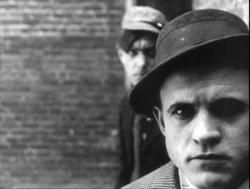
Elmer Booth in The Musketeers of Pig Alley
The Musketeers of Pig Alley is a great little early silent film. As Patrick noted, Griffith knew how to direct a silent film better than most. The scene at the end has very few dialogue cards yet you can follow the entire scene perfectly, just by how the actors express themselves. Lillian Gish was a staunch supporter of the art of the silent film, even after the advent of sound. She is quoted as saying, "I never approved of talkies. Silent movies were well on their way to developing into an entirely new art form. It was not just pantomime, but something wonderfully expressive." Watch this film and see Gish prove her point.
I agree with Scott that Elmer Booth had real presence. You take little notice of any other actor on screen but him. Snapper is a morally interesting character. He steals from the musician, yet he saves Gish when some guy spikes her drink. He carries himself with such confidence and swagger that you cannot help but like him.
My only question is what did that guy put in Gish's drink? It looks like a powder and I am only guessing here but I think it is supposed to be cocaine. In the early 1900s, cocaine use had become quite common in some areas of the country, so much so that the Harrison Narcotic Act of 1914 was passed, which restricted the legal use of cocaine. Either way, it adds another layer of interest to an already good film.
Photos © Copyright Biograph Company (1912)

